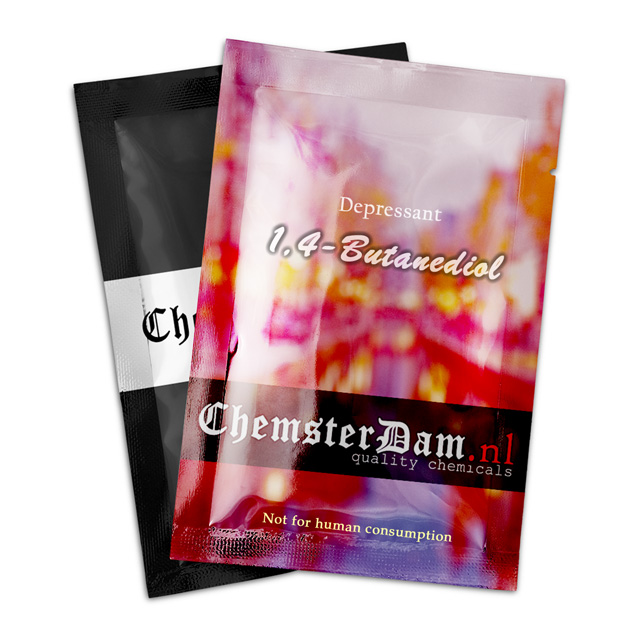| property | value |
|---|---|
| Common names | 1,4-Butanediol, 1,4-B, BD, One Comma Four, One Four Bee, Butylene Glycol, or One Four B-D-O |
| Systematic name | Butane-1,4-diol |
| Psychoactive class | Depressant |
| Chemical class | GABAergic |
1,4-butanediol (1,4-b, butylene glycol, or bd) is a thick, colourless liquid which is nearly odorless with a distinct bitter taste. 1,4-butanediol is used industrially as a solvent and in the manufacture of some types of plastics, elastic fibers and polyurethanes. in organic chemistry, 1,4-butanediol is used for the synthesis of γ-butyrolactone (gbl).
in humans, it acts as a depressant and a prodrug for ghb where 1ml is equivalent to 1g of ghb. it is used as a recreational intoxicant with effects similar to alcohol.
1,4-butanediol, as well as gbl, will dissolve most types of plastic over time. for this reason, it is recommended to only transport and store the drug using a glass container, standard gelatin capsules (not vegetarian), or high-density polyethylene plastic (also known as #2 recycled plastic). to check the type of plastic used on a bottle, one can look at the bottom for a number in the triangle shaped recycling label.
chemistry
1,4-butanediol is classified as a subclass of alcoholic compounds called diols. diols are named for having two alcohol (oh-) substitutions in their structure. 1,4-butanediol is comprised of a butane chain of four carbon groups with an alcohol group bound to each terminal carbon of this chain. 1,4-butanediol is named for these alcohol substitutions, which are located at r1 and r4.
pharmacology
1,4-butanediol is not active in its own right; its mechanism of action stems from its identity as a prodrug of ghb.
it is converted into ghb in the liver by the enzymes alcohol dehydrogenase and aldehyde dehydrogenase, which is the same enzyme as alcohol. 1,4-butanediol is first converted into 4-hydroxybutaldehyde in the liver and is released into the bloodstream before returning to the liver to convert into ghb. this process results in a much more delayed onset than gbl or ghb.
the differing levels of dehydrogenase enzymes can vary between individuals, meaning that, like alcohol, effects can differ greatly between users. in many, this manifests as a slow onset of effects and a higher rate of aldehyde collecting in the bloodstream, causing more toxic side effects. because of these pharmacokinetic differences, 1,4-butanediol tends to be less potent and with a slower onset than ghb but has a longer duration; the related compound gbl tends to be slightly more potent and faster to take effect but more short-acting than ghb.


StachB –